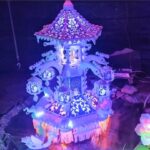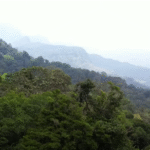The Soul of the Island: Sri Lanka’s Enduring Bond with the Elephant – By Bhanuka – eLanka

The elephant is more than an animal in Sri Lanka—it is a living emblem of culture, reverence, and memory. For centuries, the Sri Lankan elephant (Elephas maximus maximus) has walked the plains, forests, and sacred sites of the island, deeply interwoven into the nation’s spiritual and cultural fabric. Its form is carved into the walls of ancient temples, its image painted in folklore and tradition, and its presence honored in majestic parades and gentle rituals. To understand the elephant in Sri Lanka is to touch the soul of the island itself.
Standing as the largest and most robust subspecies of the Asian elephant, the Sri Lankan elephant is characterized by its grandeur and grace. With dark grey skin often tinged with pinkish patches on its face, ears, and trunk, and a notably smaller number of tuskers compared to its African relatives, this gentle giant commands awe and admiration. Males can weigh up to 5,500 kilograms and reach heights of 3 meters at the shoulder. But beyond size and stature, it is the elephant’s intelligence, emotional depth, and communal bonds that stir the deepest respect among those who live alongside it.
In ancient Sri Lankan kingdoms, elephants were symbols of royal authority and divine power. Kings maintained elephant stables known as “Ath Panthiya,” and only select individuals were chosen to ride these noble creatures. Chronicles such as the Mahavamsa speak of elephants with near-mythical status, like Kandula, the war elephant of King Dutugemunu, who fought alongside the monarch in battle. These stories, passed down through generations, have infused the animal with an aura of valor and loyalty.
Even today, the most iconic role of the elephant in modern Sri Lanka can be seen during the annual Esala Perahera in Kandy. This grand religious procession, held to honor the Sacred Tooth Relic of the Buddha, features scores of adorned elephants moving rhythmically to traditional drums and chants, illuminating the streets with splendor and sanctity. The lead elephant, often a tusker, carries the revered relic in a jeweled casket upon its back. It is not merely a parade—it is a sacred duty, and the elephant, in that moment, becomes a bearer of spiritual power and grace.
Yet, the elephant’s presence in Sri Lanka is not confined to ceremonial occasions. It is deeply embedded in everyday consciousness, from temple grounds where semi-domesticated elephants are kept under religious patronage, to the wilderness where herds roam across vast landscapes. National parks such as Udawalawe, Yala, Wasgamuwa, Minneriya, and Kaudulla serve as sanctuaries where these magnificent animals live relatively undisturbed, drawing both local and international visitors eager to witness their majesty in the wild.
One of the most spectacular natural events is the “Gathering” at Minneriya, where during the dry season, hundreds of elephants congregate near the reservoir in search of water and fresh grass. It is the largest known gathering of Asian elephants in the world and a vivid reminder of how nature, when protected, can continue to awe and inspire.
However, the life of an elephant in Sri Lanka is not without peril. With rising populations, expanding agriculture, and infrastructural development, elephant habitats have been increasingly fragmented. Ancient migration paths have been severed, leading to escalating human-elephant conflict. Elephants, driven by hunger and instinct, often stray into farmlands, where they damage crops and occasionally threaten human life. In retaliation, many suffer injuries or death at the hands of angry villagers, electric fences, or hidden explosives known as “hakka patas.”
The cost is tragic on both sides—families mourn lost loved ones, while the elephants, especially calves and mothers, bear the brunt of injuries and displacement. Wildlife experts estimate that Sri Lanka loses more than 300 elephants and 70 humans annually due to such conflicts, a heartbreaking statistic for a country that holds these animals so dearly.
In response, conservation efforts have intensified. Wildlife corridors have been proposed and partially implemented to reconnect fragmented habitats. Community-based programs aim to educate villagers about co-existence strategies and the use of deterrents that do not harm the animals. Sanctuaries such as the Pinnawala Elephant Orphanage and the Elephant Transit Home in Udawalawe rescue orphaned or injured elephants, rehabilitating them before releasing them back into the wild where possible.
Yet, challenges remain. Balancing economic development with ecological preservation is a delicate task. Tourism, while a vital source of income, must be managed to prevent exploitation or stress to elephants, especially in unethical riding camps or performance shows. True eco-tourism must prioritize the well-being of the animal over photo opportunities.
Amid these modern concerns, the spiritual reverence for elephants persists. In Buddhist teachings, the elephant symbolizes mindfulness, strength, and compassion. Lord Buddha himself is said to have been an elephant in several of his previous births (Jataka tales), and the animal features prominently in stories teaching moral lessons about patience, kindness, and humility.
In rural areas, villagers still pause when an elephant crosses their path—out of respect, fear, or awe. Children learn to draw elephants before they learn to write. Craftspeople carve them into wood, paint them on clay pots, and stitch their form onto batik cloth. To the Sri Lankan heart, the elephant is not an “other.” It is kin. It is spirit. It is home.
As the world rapidly changes, the story of Sri Lanka’s elephants reminds us of a time when humans and animals shared space with mutual respect. It calls on us to look deeper, to acknowledge not just the beauty of the elephant but its role in teaching us about balance, stewardship, and grace. To save the elephant is to preserve a piece of the nation’s identity—a soul-shaped legacy passed down in whispers of drumbeats, moonlit processions, and the deep, echoing call of the wild.
In the end, the elephant is not simply a creature of the forests or a bearer of relics. It is a living symbol of Sri Lanka’s resilience, spirituality, and harmony with the natural world. It is, indeed, the soul of the island.





















